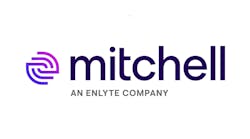Battered and bruised by a sputtering automotive industry and the nation’s highest unemployment rate, Michigan is banking on advanced electric vehicle battery production to jumpstart its short-circuited economy.
Detroit has turned on a dime before. As war clouds were rumbling in the aftermath of Dec. 7, 1941, by the end of 1942 the Motor City had completely retooled to turn out tanks, halftracks and B-17 bombers.
“By leveraging our state’s abundant talent in automotive research and development and manufacturing, and by working the most aggressive economic plan of any state in the country, Michigan is poised to become the advanced-battery capital of the world,” says Gov. Jennifer M. Granholm. “We are hopeful that Michigan’s leadership will bring significant federal funding to Michigan companies that are creating the green 21st century energy transportation technology here.”
The state has approved tax credits to help facilitate an LG Chem partnership with General Motors for a $200 million lithium-ion battery plant in Troy and the 300 jobs it will bring.
Tax relief is also on the books for battery makers Johnson Controls-Saft Advanced Power Solutions, KD Advanced Battery Group and A123Systems. In addition, Granholm is hankering for $2 billion in federal grants to be doled out later this year.
“These groundbreaking incentives for battery development and manufacturing add to our comprehensive portfolio of innovative programs, the 21st Century Jobs Fund and Centers of Energy Excellence, now in place to grow our state’s economy,” reports Greg Main, president and CEO of the Michigan Economic Growth Authority (MEGA).
It remains unclear at this point whether GM’s bankruptcy will throw a monkey wrench into the works, but LG Chem has been chosen by the automaker to bring on the juice for the Chevrolet Volt extended-range EV scheduled for launch in 2010.
“This is a game-changing opportunity – going from nickel metal hydride to lithium-ion polymer, the so-called second generation of EV/HEV batteries,” reports Peter Bahn-suk Kim, the battery producer’s CEO. “We plan to spend about $1 billion on lithium-ion polymer batteries by 2013, confident that LG Chem will continue to grow into a top global supplier for EVs/HEVs,” he forecasts.
Currently the EV/hybrid sector covers only 700,000 – or 0.9 percent – of the 72 million cars on the road worldwide. “However, due to concerns regarding fossil fuels and an increasing demand of eco-responsibility, this number is expected to rise quickly,” says Kim. The battery market is likely to expand up to $3.2 billion in revenue by 2012, compared to $700 million in 2008, he adds.
FEV, Inc. is up and running with an $8 million Hybrid and Electric Vehicle Development Center (HEVDC) in Auburn Hills. “The launch of the HEVDC comes at a critical time for our customers,” says Gary Rogers, the company’s president and CEO. “The market, whether by congressional or state mandate, or by consumer choice, is headed in a greener direction, and it’s headed there quickly,” he points out.
“If the infrastructure to develop and thoroughly test hybrid and electric technology is not in place soon – even immediately – then we risk losing precious time and dollars in getting it on the street,” warns Rogers, “or worse, putting technology out there that will not live up to its promise.”
FEV and Raser Technologies are already on the move with a demonstration-model Electric Hummer H3 developed in cooperation with GM. “We believe this vehicle may hold the key to solving the most important challenges facing the nation by reducing our dependency on foreign oil, addressing climate change, and reinvigorating American manufacturing with American technology,” says Kraig Higginson, Raser’s chairman.
“Americans value the versatility of trucks and SUVs – the No. 1 selling vehicles in America – but we also want to do what’s right for the environment,” Higginson notes. “This vehicle demonstrates that through innovation, we can do both.”
The EV powertrain on the prototype Hummer can be applied to other SUV and truck platforms, making it “ideal for fleets, contractors and small business owners,” explains Raser vice president of marketing David West. “It delivers the payload of a pickup truck with better gas fuel economy than a Prius.”
According to FEV’s Rogers, who is also a member of the National Research Council’s Committee on the Effectiveness of Corporate Average Fuel Economy (CAFÉ) Standards, “because most Americans drive less than 40 miles a day, this powertrain technology could have an enormous impact reducing the amount of gasoline consumed every day and support President Obama’s initiative to achieve significant improvements in fuel economy across all sectors of the light-duty fleet, including trucks and SUV’s.”
The fate of the standard gas hog Hummer is in flux as the brand is set to be sold to China’s Sichuan Tengzhong Heavy Industry Machinery Co.
Similar uncertainties surround the financial future of Chrysler, which in April inked a battery-supply deal with A123Systems for the automaker’s proposed ENVI line of electric vehicles expected to launch next year. Demos on display include EV versions of the Jeep Wrangler and Patriot, Chrysler Town & Country and the 200C.
“This bold move by Chrysler changes the game and greatly improves our country’s ability to modernize our transportation fleet,” says A123 President and CEO David Vieau. “We’re confident that our collaboration with Chrysler will serve as proof that American innovation is alive and well and ready to lead the new global market for fuel-efficient electric vehicles.”
The numbers continue to add up for A123, which also has an agreement with Shanghai Automotive Industry Corp., producer of China’s first hybrid.
A123 has existing Wolverine State operations in Ann Arbor and Novi, with an anticipated expansion into Livonia. “With the support of the state’s leadership and highly skilled workforce,” says Vieau, “we expect that our planned new facilities in Michigan will serve as a global product center – powering a new generation of cleaner, more fuel efficient cars and trucks.”
Aiming to complete the Big Three EV trifecta is Ford, which is spending $550 million to convert its Wayne Expedition and Navigator plant over to producing the Focus BEV (battery electric vehicle), slated for release in 2011, and other fuel efficient vehicles.
“Ford is investing in both the future of the American auto industry and the state of Michigan by bringing together world-class products, advanced technology applications and strong partnerships with the UAW to build the next generation of vehicles that will help end our nation’s dependence on foreign oil,” says Gov. Granholm.
“As a key part of Ford’s transformation,” adds Ford President and CEO Alan Mulally, “it reflects not just an investment in our future, but also in the state of Michigan and in American manufacturing.”
Johnson Control-Saft Advanced Power Solutions (JCS) has a battery partnership with Ford that involves steering a $220 million project toward the community of Holland.
“Our first U.S. plant will bring about 500 jobs to Michigan, and many additional jobs through suppliers and the businesses these employees will support,” says Alex Molinaroli, president of JCS’ Power Solutions division. “It is a key element of our broader strategy and commitment to the hybrid vehicle industry in North America. Battery technology is strategically important to the future of the U.S. automotive industry and the economy at large.”



